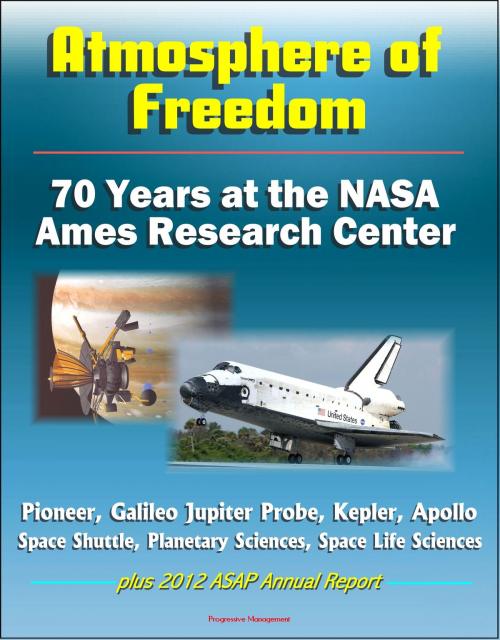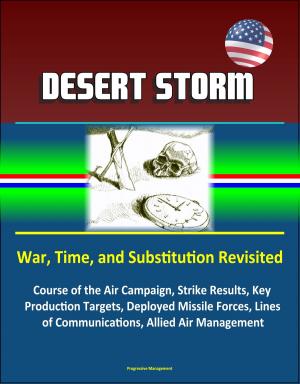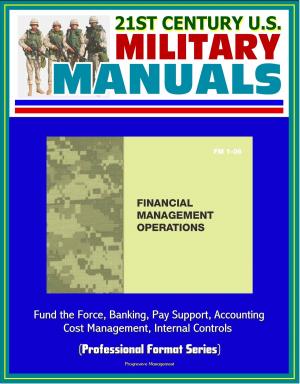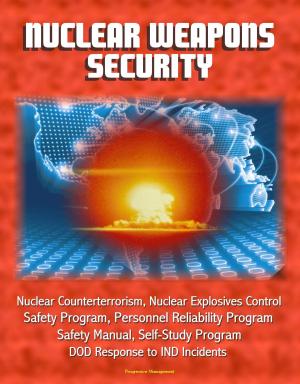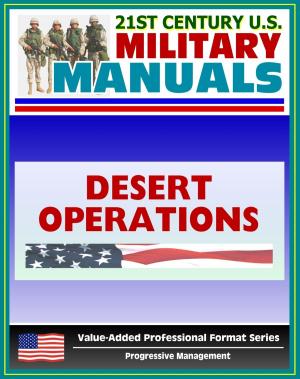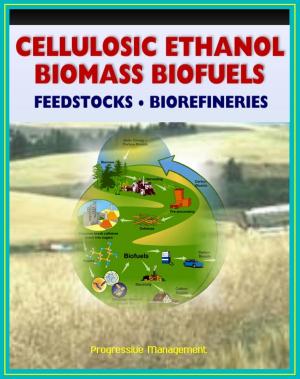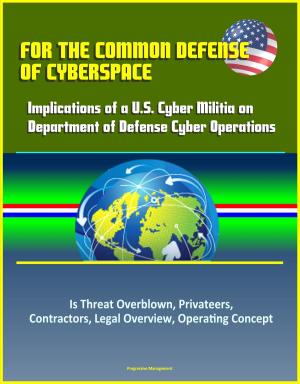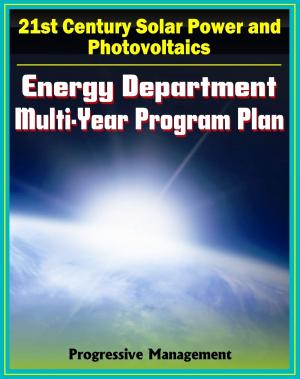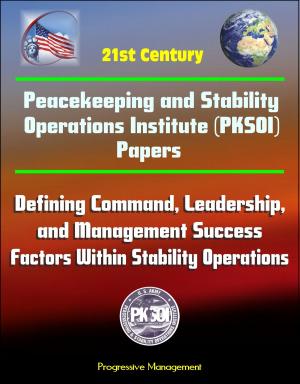Atmosphere of Freedom: 70 Years at the NASA Ames Research Center - Pioneer, Galileo Jupiter Probe, Kepler, Apollo, Space Shuttle, Planetary Sciences, Space Life Sciences, plus 2012 ASAP Annual Report
Nonfiction, Science & Nature, Technology, Aeronautics & Astronautics| Author: | Progressive Management | ISBN: | 9781301492251 |
| Publisher: | Progressive Management | Publication: | April 7, 2013 |
| Imprint: | Smashwords Edition | Language: | English |
| Author: | Progressive Management |
| ISBN: | 9781301492251 |
| Publisher: | Progressive Management |
| Publication: | April 7, 2013 |
| Imprint: | Smashwords Edition |
| Language: | English |
This is a comprehensive history of NASA's Ames Research Center in California. This 70th anniversary edition begins with a history of the Center from the perspective of the Center directors— there have been ten since 1958. This ties the history of Ames into its larger context of space policy and politics, and addresses the impact of leadership on the history of the Center. Then the chapters are organized by the subjects that persisted throughout Ames' history: spacecraft projects, human exploration, planetary sciences, space life sciences, information technology, and aeronautical research. Each of these stories has a history dating back to at least 1958, so issues of overlap in the narrative remain—in that what Ames has done best is explore the fruitful interchanges of disciplines and capabilities. Computational fluid dynamics, for example, developed from iterative advances in aerodynamics, supercomputing and software development, and so will be addressed in various chapters. Astrobiology, likewise, grew along the shifting border between the space life sciences and planetary science.
ADMINISTRATIVE HISTORY * DeFrance Aligns His Center with NASA * Harvey Allen as Director * Hans Mark * Clarence A. Syvertson * William F. Ballhaus, Jr. * Dale L. Compton * The Goldin Age * Moffett Field and Cultural Climate * Ken K. Munechika * Zero Base Review * Henry McDonald * G. Scott Hubbard * A Time of Transition * Simon "Pete" Worden * Once Again, Re-inventing NASA Ames * The Importance of Directors * SPACE PROJECTS * Spacecraft Program Management * Early Spaceflight Experiments * Pioneers 6 to 9 * Magnetometers * Pioneers 10 and 11 * Pioneer Venus * Galileo Jupiter Probe * Lunar Prospector * Stardust * SOFIA * Kepler * LCROSS * Continuing Missions * ENGINEERING HUMAN SPACECRAFT * ".. .returning him safely to earth" * Reentry Test Facilities * The Apollo Program * Space Shuttle Technology * Return To Flight * Nanotechology * Constellation * PLANETARY SCIENCES * Impact Physics and Tektites * Planetary Atmospheres and Airborne Science * Infrared Astronomy * Exobiology and Astrochemistry * Theoretical Space Science * Search for Extraterrestrial Intelligence * Near-Earth Objects * NASA Astrobiology Institute * Lunar Science * SPACE LIFE SCIENCES * Start of Life Sciences Research * Biosatellites * Gravitational Biology * Autogenic Feedback Training * Space Habitability * Space Station Biological Research Project * INFORMATION TECHNOLOGY * Supercomputing * Internetworking * Computational Fluid Dynamics * Computational Chemistry * Intelligent Systems and Telepresence * Center of Excellence in IT * Rebirth of Supercomputing * AERONAUTICAL TECHNOLOGY AND FLIGHT RESEARCH * Flight Simulation * Integrative Flight Research * Upgrading the Wind Tunnels * Vertical Take-Off and Landing Aircraft * Short Take-Off and Landing * Rotary Wing Aircraft * Aviation Operations * Green Aviation * CONCLUSION
This is a comprehensive history of NASA's Ames Research Center in California. This 70th anniversary edition begins with a history of the Center from the perspective of the Center directors— there have been ten since 1958. This ties the history of Ames into its larger context of space policy and politics, and addresses the impact of leadership on the history of the Center. Then the chapters are organized by the subjects that persisted throughout Ames' history: spacecraft projects, human exploration, planetary sciences, space life sciences, information technology, and aeronautical research. Each of these stories has a history dating back to at least 1958, so issues of overlap in the narrative remain—in that what Ames has done best is explore the fruitful interchanges of disciplines and capabilities. Computational fluid dynamics, for example, developed from iterative advances in aerodynamics, supercomputing and software development, and so will be addressed in various chapters. Astrobiology, likewise, grew along the shifting border between the space life sciences and planetary science.
ADMINISTRATIVE HISTORY * DeFrance Aligns His Center with NASA * Harvey Allen as Director * Hans Mark * Clarence A. Syvertson * William F. Ballhaus, Jr. * Dale L. Compton * The Goldin Age * Moffett Field and Cultural Climate * Ken K. Munechika * Zero Base Review * Henry McDonald * G. Scott Hubbard * A Time of Transition * Simon "Pete" Worden * Once Again, Re-inventing NASA Ames * The Importance of Directors * SPACE PROJECTS * Spacecraft Program Management * Early Spaceflight Experiments * Pioneers 6 to 9 * Magnetometers * Pioneers 10 and 11 * Pioneer Venus * Galileo Jupiter Probe * Lunar Prospector * Stardust * SOFIA * Kepler * LCROSS * Continuing Missions * ENGINEERING HUMAN SPACECRAFT * ".. .returning him safely to earth" * Reentry Test Facilities * The Apollo Program * Space Shuttle Technology * Return To Flight * Nanotechology * Constellation * PLANETARY SCIENCES * Impact Physics and Tektites * Planetary Atmospheres and Airborne Science * Infrared Astronomy * Exobiology and Astrochemistry * Theoretical Space Science * Search for Extraterrestrial Intelligence * Near-Earth Objects * NASA Astrobiology Institute * Lunar Science * SPACE LIFE SCIENCES * Start of Life Sciences Research * Biosatellites * Gravitational Biology * Autogenic Feedback Training * Space Habitability * Space Station Biological Research Project * INFORMATION TECHNOLOGY * Supercomputing * Internetworking * Computational Fluid Dynamics * Computational Chemistry * Intelligent Systems and Telepresence * Center of Excellence in IT * Rebirth of Supercomputing * AERONAUTICAL TECHNOLOGY AND FLIGHT RESEARCH * Flight Simulation * Integrative Flight Research * Upgrading the Wind Tunnels * Vertical Take-Off and Landing Aircraft * Short Take-Off and Landing * Rotary Wing Aircraft * Aviation Operations * Green Aviation * CONCLUSION
